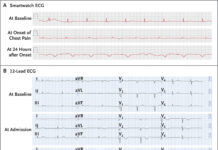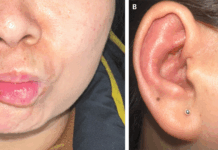A 73-old male presented with toxic effects of Neem oil after ingesting only 20 mL of it!
Neem oil has anti-fungal, anti-bacterial, and insect repellent properties due to which it has maintained its position in traditional medicine. It is used to treat several skin diseases too. Neem oil comprises mainly triglycerides, steroids, and triterpenoids. However, besides the benefits, there have been reports of its toxicities in children, infants, and even in adults. However, toxicity in adults is less common. In infants and children, It may cause hepatotoxicity, vomiting, metabolic acidosis, and encephalopathy. In adults, it may cause vomiting, encephalopathy, metabolic acidosis, visual loss, and seizures. Azadirachtin is the main compound linked to the toxic effects of Neem oil. ربح مال حقيقي من النت
Here is a case report describing a 73-year-old man with a history of type II diabetes mellitus and psoriasis. He presented to the emergency department 1 hour after the ingestion of Neem oil with complaints of drowsiness and vomiting. History revealed that he had ingested approximately 20 mL of Neem oil.
His usual medications included human Mixtard insulin (30/70). He regularly took 16 U before breakfast and 10 U prior to dinner.
On examination in the emergency department, he was drowsy with a Glasgow coma scale score of 13/15. His vitals revealed a pulse rate of 110/min, blood pressure of 150/90, respiratory rate of 28/min, and oxygen saturation of 95% at room air. However, his physical examination was unremarkable with normal systemic examinations.
In the ED, the patient started convulsing and lost consciousness. The doctors intubated him. Moreover, they administered intravenous lorazepam. After shifting him to the intensive care unit, he received insulin and symptomatic treatment.
Serology revealed hemoglobin 13.3 gm/dl, leukocyte leukocyte count 16800/μl, red blood cell count 4.41 million/cmm, platelet count 375000/μl, blood sugar 298 mg/dl, serum osmolality 277 mosmol/kg, and normal serum lactate level. لعبة جاك
An arterial blood gas analysis showed metabolic acidosis. The rest of the test results were normal with normal urine analysis, serum electrolytes, liver, renal, and thyroid function. Moreover, ECG and chest radiograph were also normal.
Brain magnetic resonance imaging revealed chronic ischemic changes due to small vessel disease.
On the second and the third day, the doctors repeated the investigation. The results revealed normal electrolytes, arterial blood gas, liver, and renal function.
During the hospital stay, he remained drowsy for 4 days, however he recovered without any long-term complications.
The doctors discharged him 1 week later. 1xbet.com




